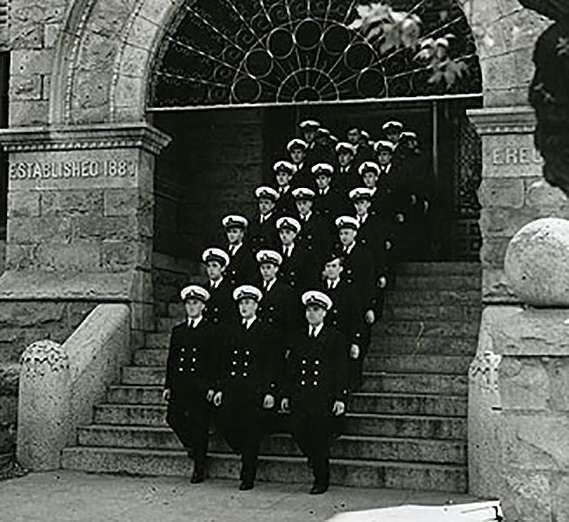Road to GU's 125th Anniversary: A Look Back at 1944-45

1944-45
Looking forward to Gonzaga University's quasquicentennial celebration (125th anniversary) in 2012, Gonzaga continues its monthly series counting back to its founding year, 1887. This series began in September (2010) when we looked back six years to the 2004-05 academic year. Each subsequent monthly story looked back another six years. In this issue, we travel back in time to view highlights of the 1944-45 academic year.
By Stephanie Plowman
Special Collections Librarian
SPOKANE, Wash. — Gonzaga, like the rest of the United States, was doing its best in the throes of World War II during the 1944-1945 academic year and the war had a profound impact on the University. Like many higher education institutions nationwide, Gonzaga faced a financial crisis due to the shortage of male students and faculty, who enlisted. Gonzaga started receiving cadets from the U.S. Navy's V-5 program in 1942. One year later, the University began to receive V-12 cadets, the Navy's collegiate program.
These military programs changed the campus atmosphere. High school boarders were moved to University-owned residences. Naval language and insignia became the norm. The school was a "ship," the floors were "decks," the beds "bunks," and the corridors were "passageways." Military drills took place on the Quad. The parish hall of the former St. Aloysius Church was renovated and served as a canteen. The football stadium was Farragut Field. By the time the V-5 program was discontinued in July 1944, approximately 778 cadets had participated at Gonzaga. The V-12 program was discontinued in 1945. More than 680 Navy officers participated in the two programs.
To assist with physical training of the cadets, Father Arthur Dussault S.J., alumnus and former high school coach, arrived in the summer of 1942. Named the Sammy Grashio Victory Course, after a GU alumnus who was missing in action in the Pacific at that time, a 28-event obstacle course was built. Considered one of the country's toughest and most rugged, this course included the "belly buster," "bear trap," and "log hand over hand" hindrances.
On June 2, 1945 the S. S. Gonzaga Victory entered the Willamette River at Portland's Oregon Shipbuilding Yards. This ship was the 434th vessel constructed at the shipyard during World War II and the 82nd Victory type. One of a series of ships named for U.S. colleges and universities, the S.S. Gonzaga measured 455 feet in length and weighed approximately 10,800 tons. Gonzaga donated books for the library of the ship, but it never entered the war. World War II ended soon after it was launched.
After America's entry into the war, football was stopped due to a shortage of men. Since football was so costly, administrators opted not to bring it back. Gonzaga's last game was a 59-0 loss to Washington State University in 1941. The stadium was demolished in 1949 to make room for campus development. Today, the Foley Center and Crosby Student Center rest on the grounds of the former stadium.
